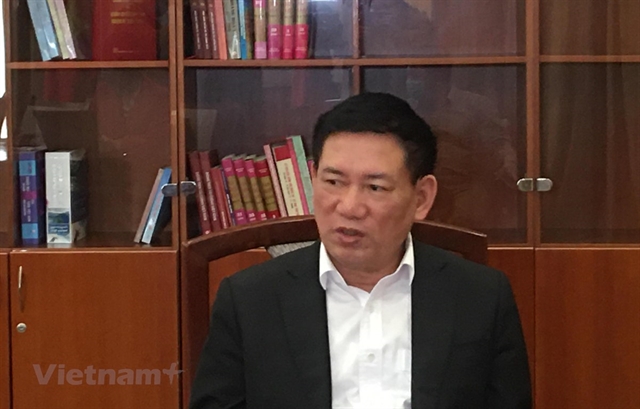
Finance Minister Hồ Đức Phớc talks to the media about the disbursement of public investment and difficulties that hinder the process.
By the end of November, just 65.7 per cent of this year’s public investment was disbursed nationwide. The Prime Minister said that by the end of this year the public investment disbursement must reach 95 -100 per cent of the planned fund. What is the status of the disbursement now?
Currently, the disbursement of public investment capital in localities is still very low. Together with pandemic development, other main factors that affect the progress of public investment relate to the preparation work including capital allocation, project development, project approval and investment procedures such as cost estimates, bidding documents and bidding and especially the slowness in land clearance.
This year, another objective reason is the sudden increase in the prices of construction materials (steel, sand, gravel). Therefore, contractors delayed construction to wait for the prices to go down again. On the other hand, the implementation of social distancing by localities to control the COVID-19 pandemic has affected activities related to the disbursement of public investment capital.
According to the expected disbursement amount until January 31, 2022, some provinces have registered to complete 75-85 per cent of the assigned plan but still have not reached the target set by the Government's Resolution. Therefore, the provinces will have to work day and night to implement and report the disbursed volume before December 31.
Some provinces have recently proposed to extend public investment projects until December 31, 2022. If every province will have such an extension, the national fiscal policy will be affected. Moreover, during the difficult time when the COVID-19 pandemic is still complicated, many businesses fail to create jobs and workers become unemployed, the extended-term for public investment projects also means that Government’s stimulus packages fail to work effectively. Therefore, localities must first focus on public investment to disburse as much, quickly and effectively as possible, and then consider stimulus packages.
What solutions has the Ministry of Finance been taking to speed up the disbursement?
The ministry has directed provinces and units to remove difficulties and problems, and at the same time, coordinate with ministries and sectors to remove "bottlenecks" to ensure effective public investment as well as disbursement speed.
The ministry ensures the fund to disburse and guides ministries/agencies/localities to complete required procedures within its functions. Currently, the ministry has a standing team that is always ready to solve problems and difficulties for the provinces.
In addition, the Finance Ministry submitted to the Government Decree No. 79/2021/ND-CP amending and supplementing the on-lending of ODA loans and foreign concessional loans of the Government; Decree No. 99/2021/NĐ-CP on management, payment and settlement of the use of public investment capital; Circular No. 96/2021/TT-BTC and Circular No.15/2021/TT-BTC, which stipulates that the People's Committees of the provinces and cities direct the Departments of Finance to coordinate with the Department of Planning and Investment and the State Treasury in reporting the provinces' disbursement of State fund. Any difficulties and problems arising during the disbursement must be tackled and solved timely.
Currently, the process of disbursing investment capital from the State budget has changed from the mechanism “first control, payment later” to “first payment, control later”. On the other hand, capital settlement time has been shortened from four days to one working day (with advance and 80 per cent of volume payment completed). The remaining payments are done no more than three working days from the date of receipt of completed and valid documents.
The problem of slow disbursement of public investment capital has occurred for years. So, in the coming time, what solutions are needed for faster disbursement?
A key solution is to perfect the legal basis, such as separating site clearance from investment projects.
Currently, the work of site clearance has problems relating to prices, land price adjustment coefficients, compensation plans, relocation, overlapping construction sites and complaints from people. This is a major bottleneck in the disbursement of public investment capital.
As site clearance and resettlement work have not been separated from public investment projects, when adjusting project costs related to site clearance, investment policies will have to be adjusted. Furthermore, the project's approval decision will affect the investment preparation time and project implementation.
So the clearance must be done first. Accordingly, once winning a bid and signing a construction contract, the investor can proceed with the project immediately. Thus, construction works will be carried out continuously. At the same time, the quality of disbursement will be better and more effective. — VNS
Xem thêm: lmth.tnemtsevni-cilbup-fo-tnemesrubsid-pu-deeps-ot-deksa-seitilacol/7019011/ymonoce/nv.swenmanteiv